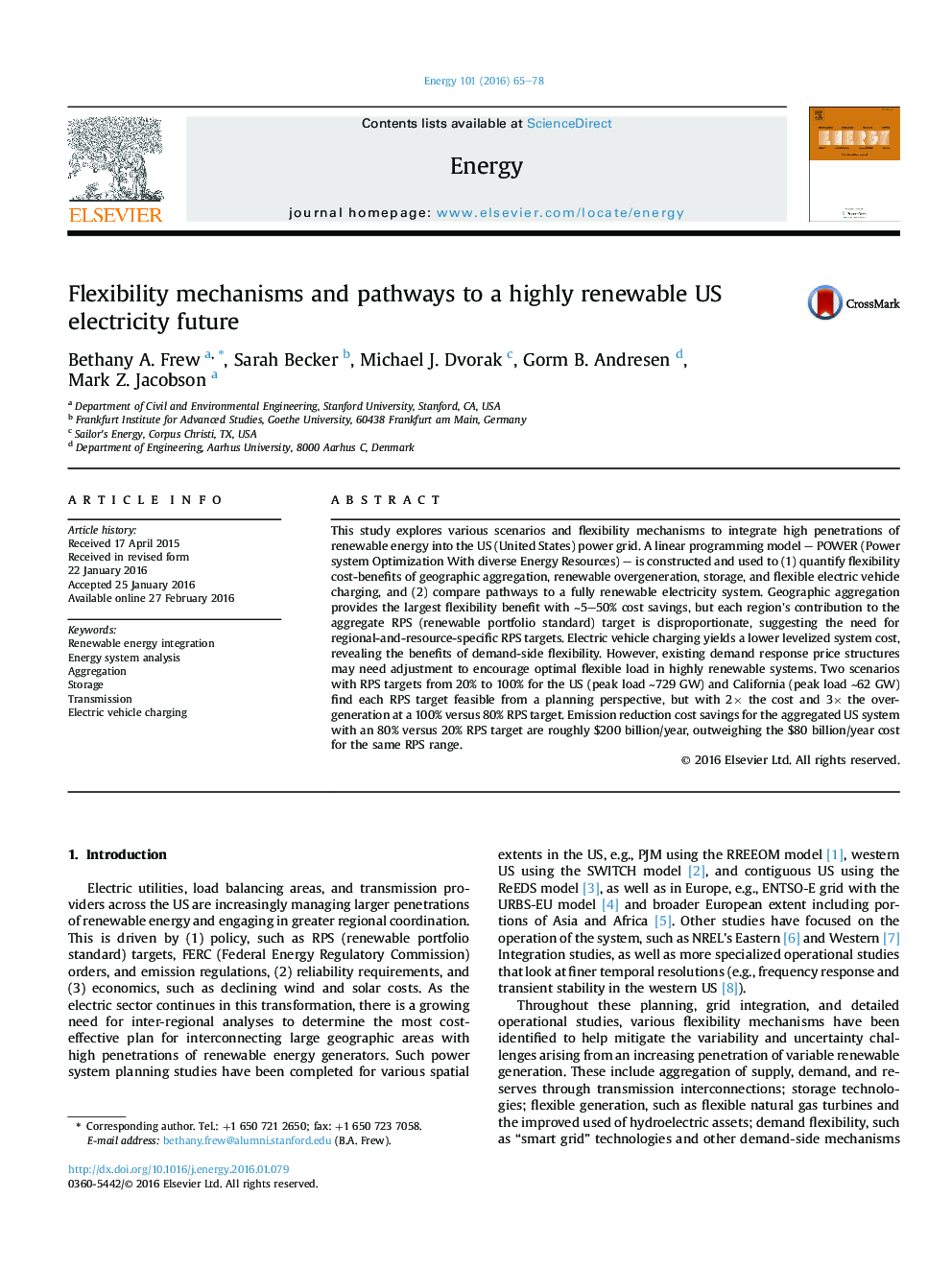| کد مقاله | کد نشریه | سال انتشار | مقاله انگلیسی | نسخه تمام متن |
|---|---|---|---|---|
| 1731012 | 1521447 | 2016 | 14 صفحه PDF | دانلود رایگان |
• A cost optimization planning model of US electricity system, POWER, is introduced.
• Tradeoffs and relative benefits of four flexibility mechanisms are evaluated.
• Geographic aggregation has largest cost benefit of flexibility mechanisms considered.
• Pathways to fully renewable systems are feasible with high cost and overgeneration.
• For an interconnected US, social cost savings outweigh system costs up to 80% RPS.
This study explores various scenarios and flexibility mechanisms to integrate high penetrations of renewable energy into the US (United States) power grid. A linear programming model – POWER (Power system Optimization With diverse Energy Resources) – is constructed and used to (1) quantify flexibility cost-benefits of geographic aggregation, renewable overgeneration, storage, and flexible electric vehicle charging, and (2) compare pathways to a fully renewable electricity system. Geographic aggregation provides the largest flexibility benefit with ∼5–50% cost savings, but each region's contribution to the aggregate RPS (renewable portfolio standard) target is disproportionate, suggesting the need for regional-and-resource-specific RPS targets. Electric vehicle charging yields a lower levelized system cost, revealing the benefits of demand-side flexibility. However, existing demand response price structures may need adjustment to encourage optimal flexible load in highly renewable systems. Two scenarios with RPS targets from 20% to 100% for the US (peak load ∼729 GW) and California (peak load ∼62 GW) find each RPS target feasible from a planning perspective, but with 2× the cost and 3× the overgeneration at a 100% versus 80% RPS target. Emission reduction cost savings for the aggregated US system with an 80% versus 20% RPS target are roughly $200 billion/year, outweighing the $80 billion/year cost for the same RPS range.
Journal: Energy - Volume 101, 15 April 2016, Pages 65–78
